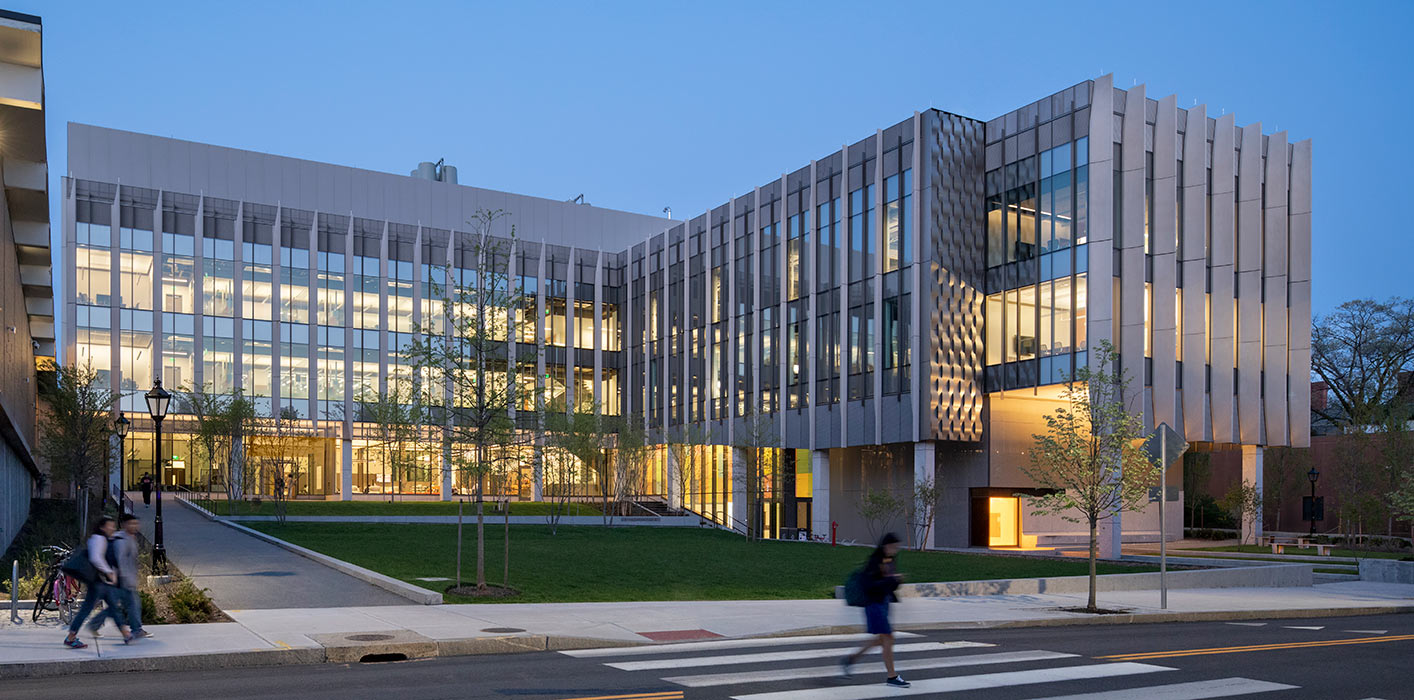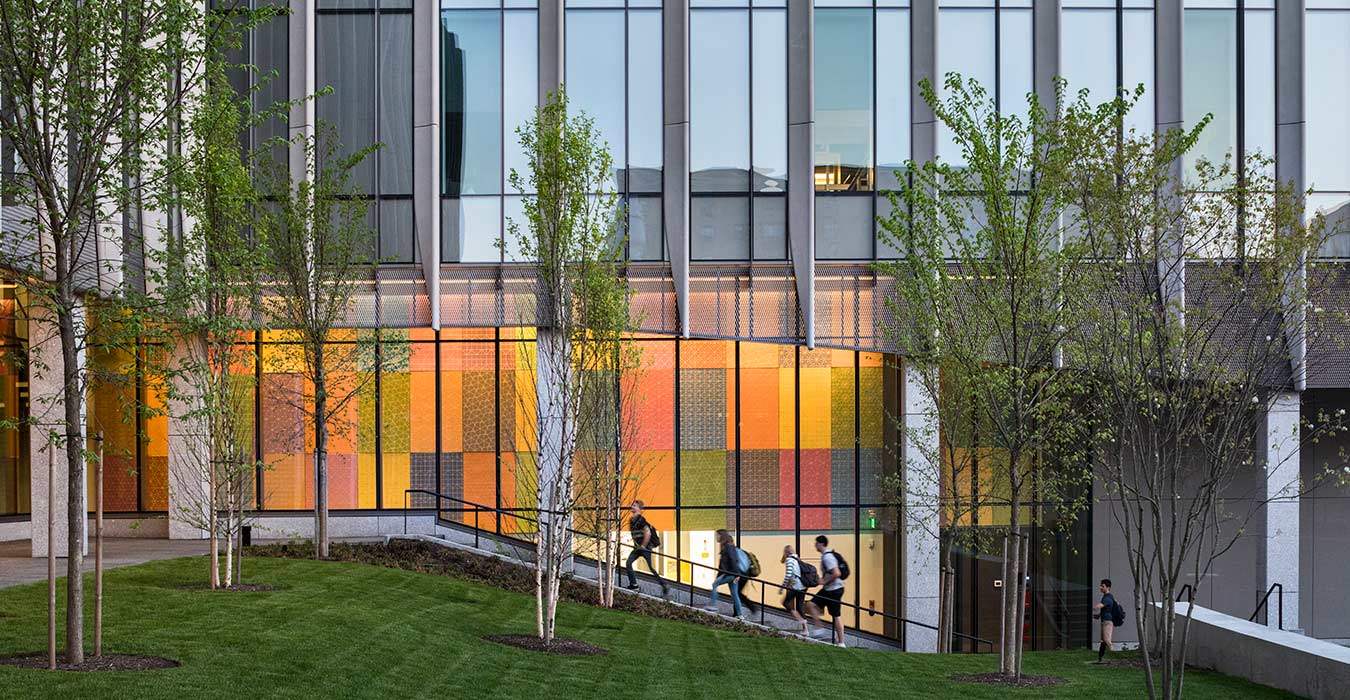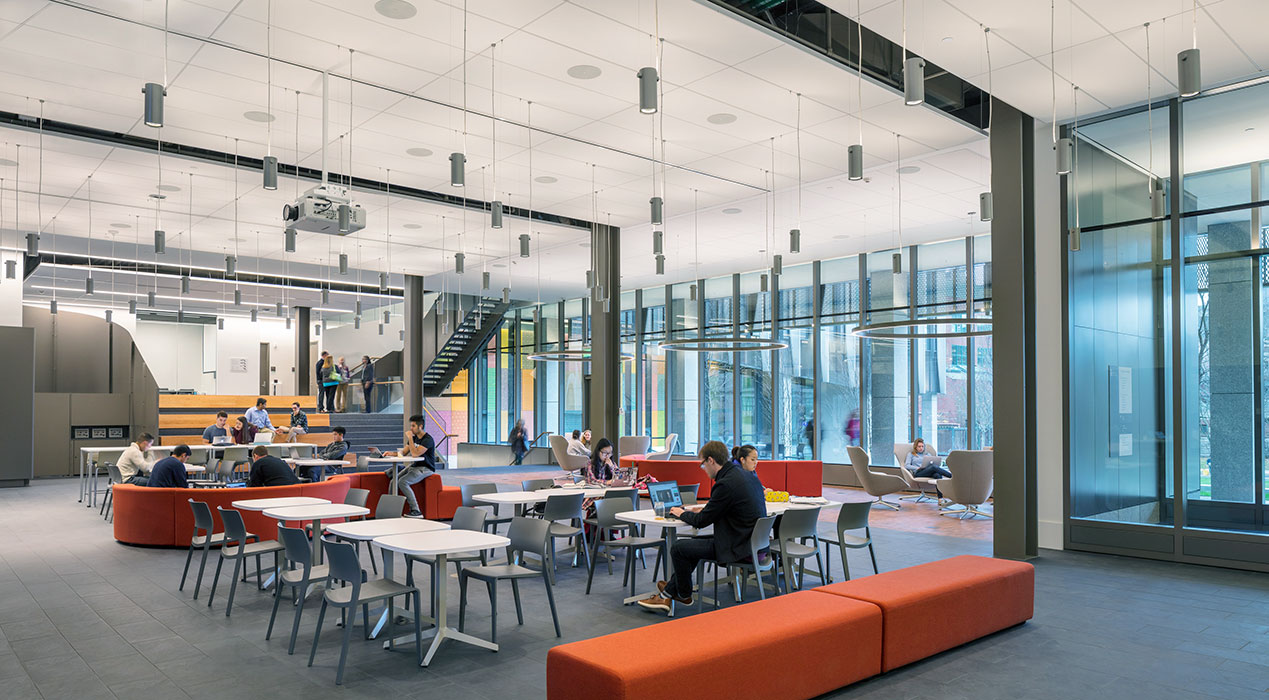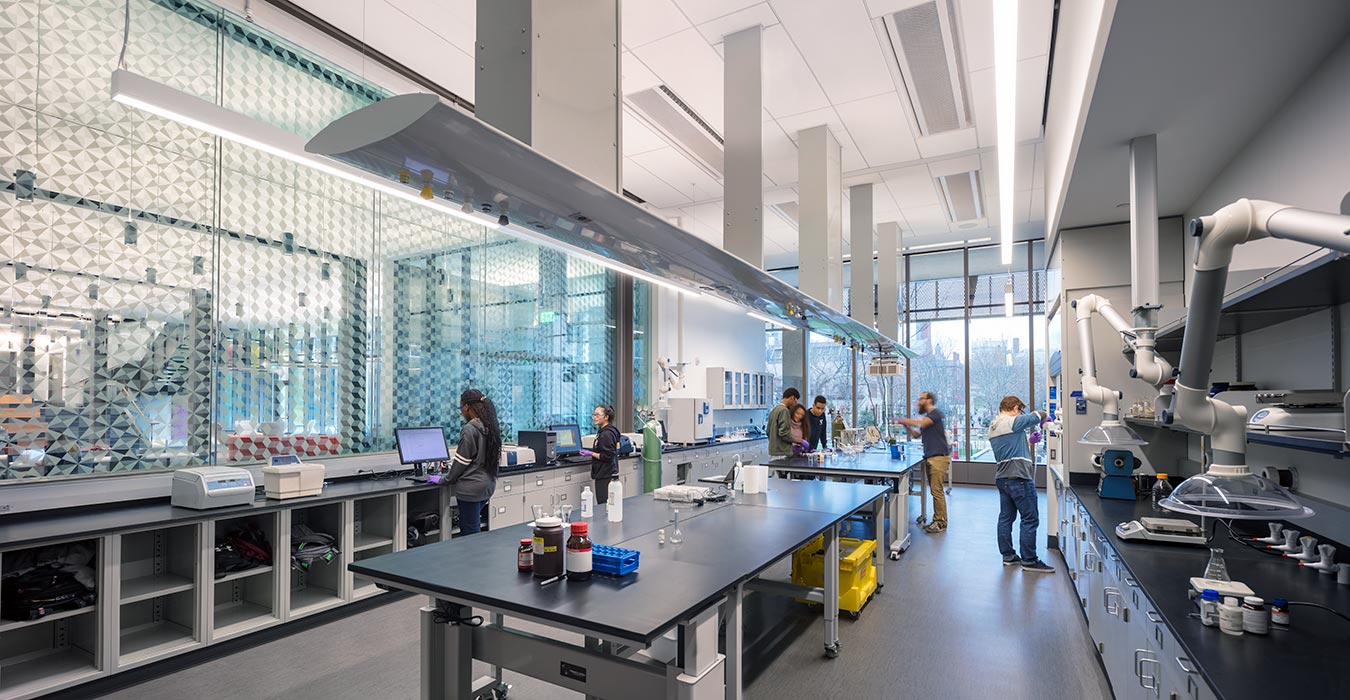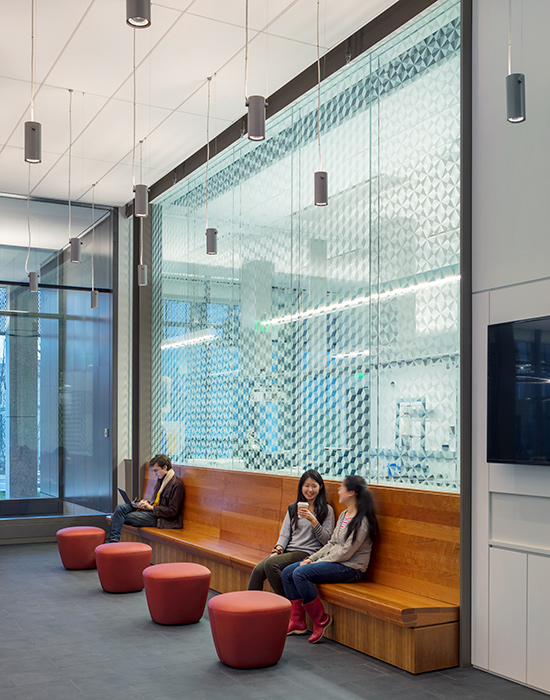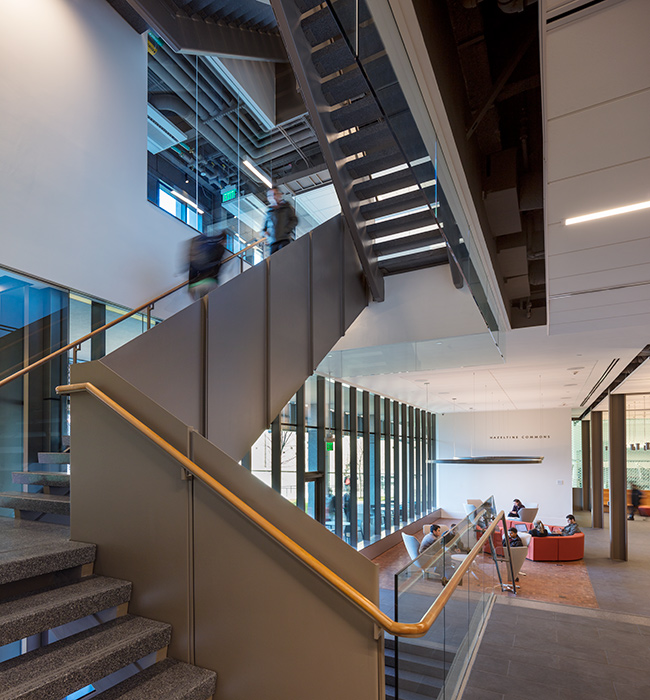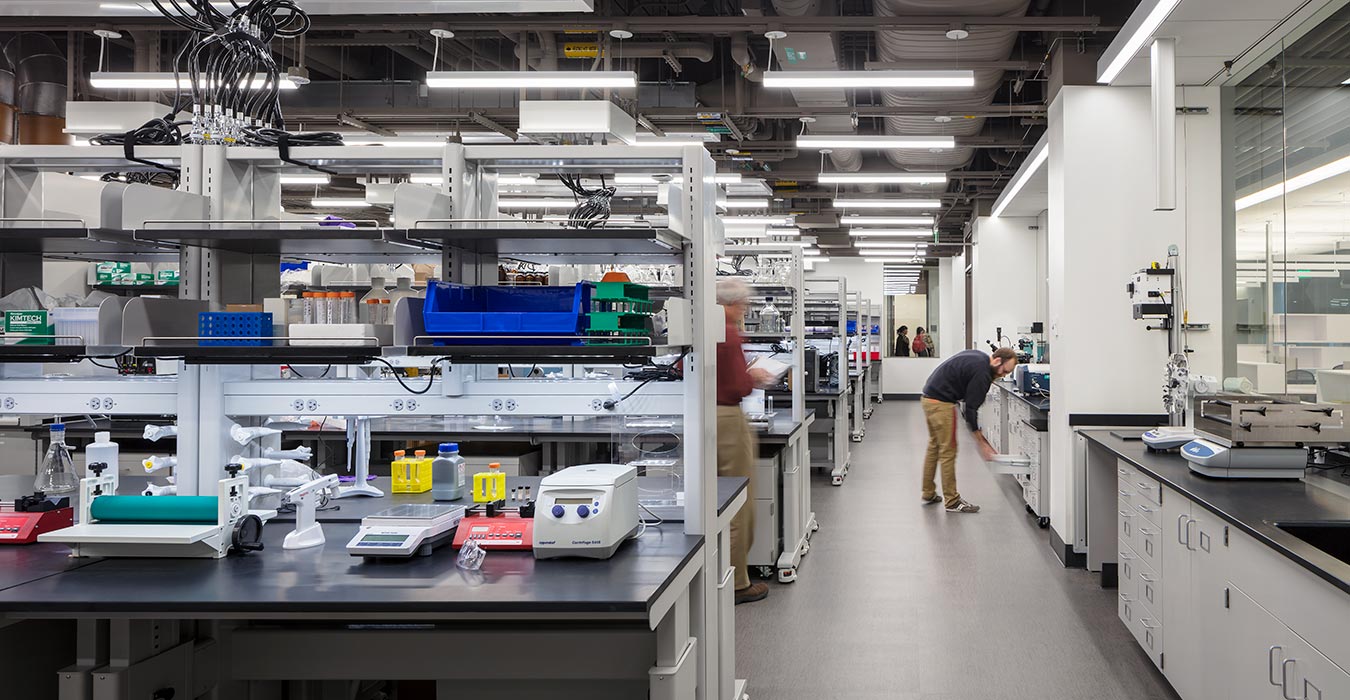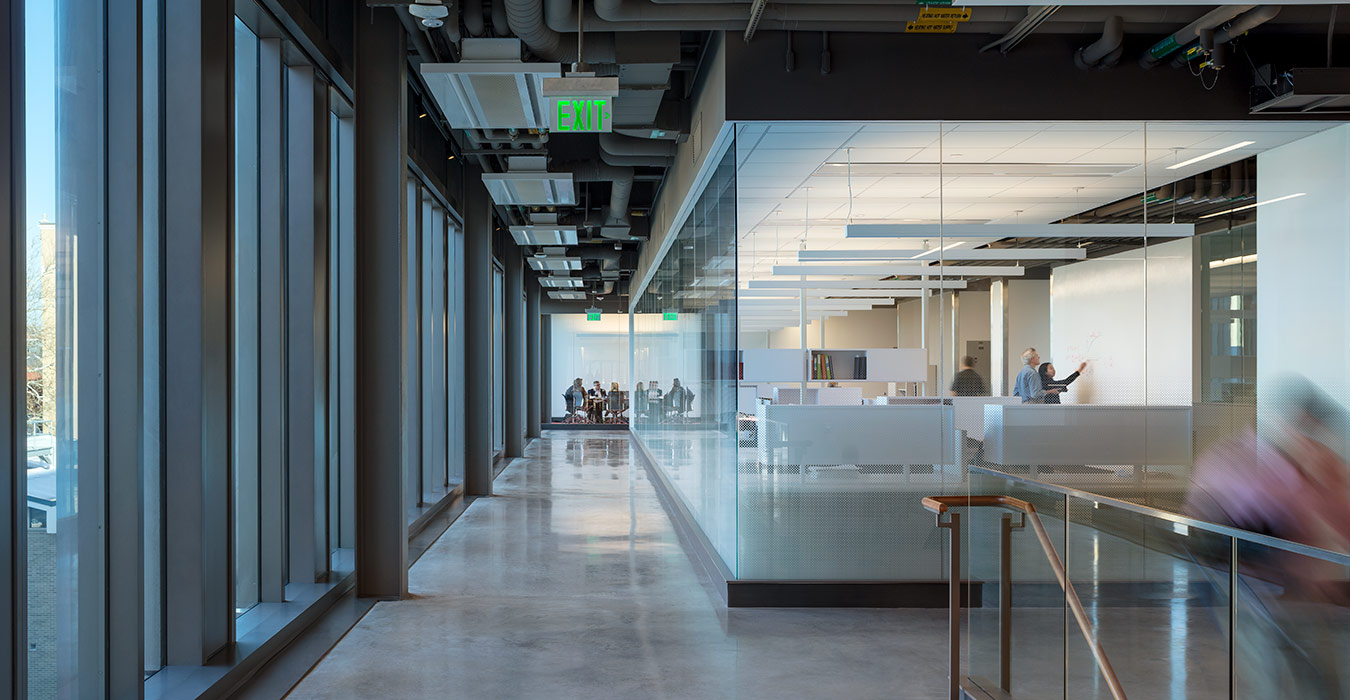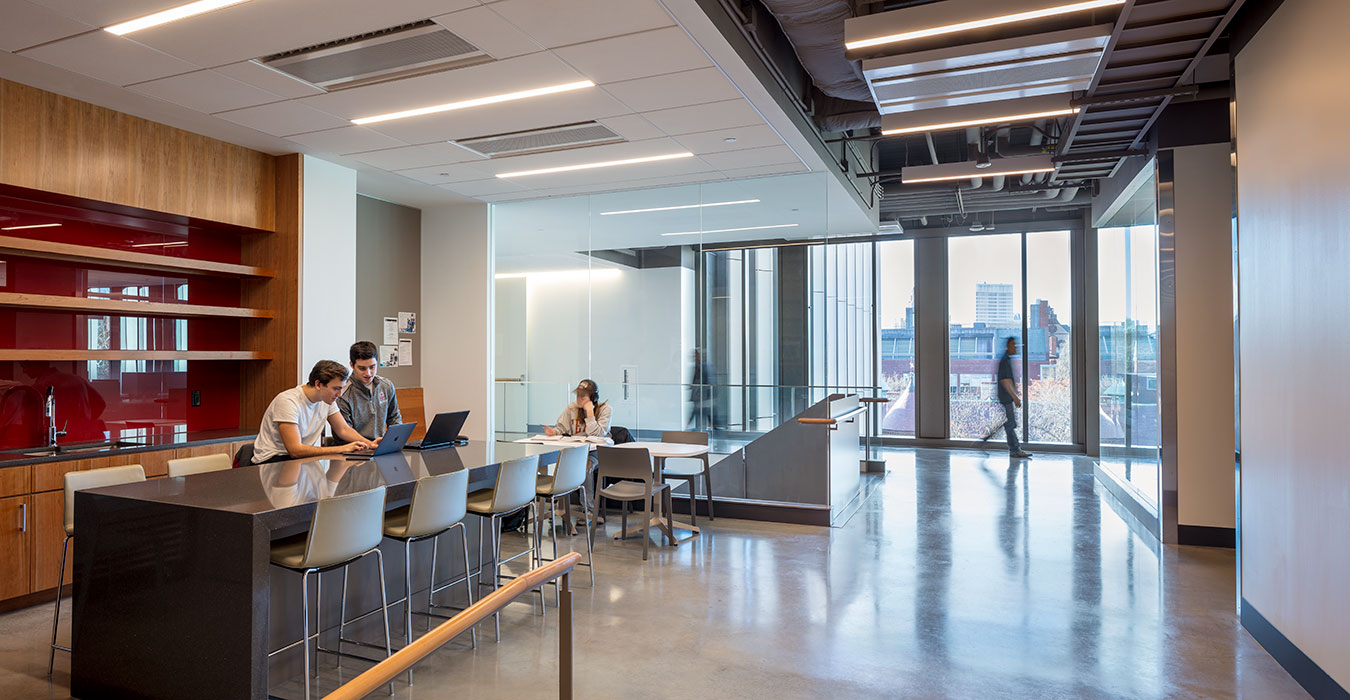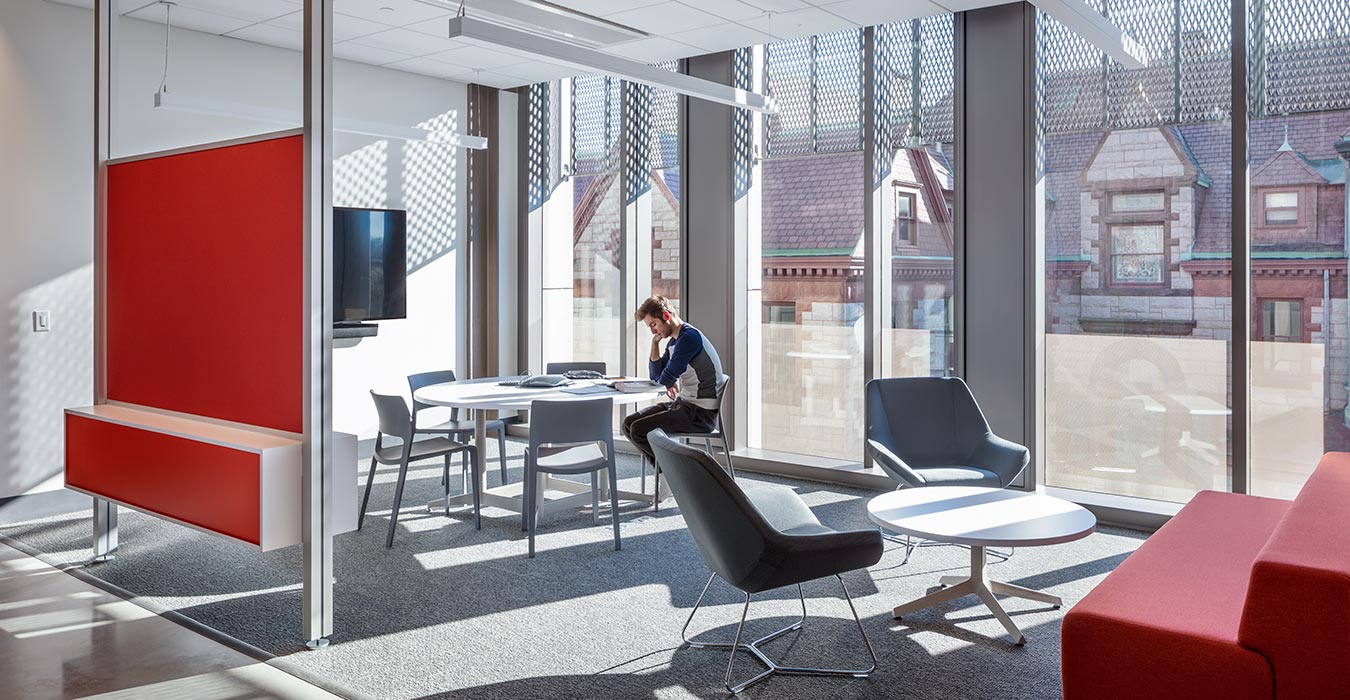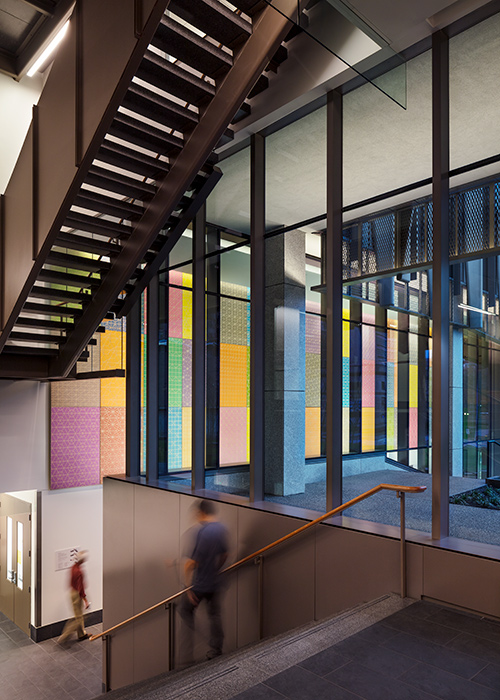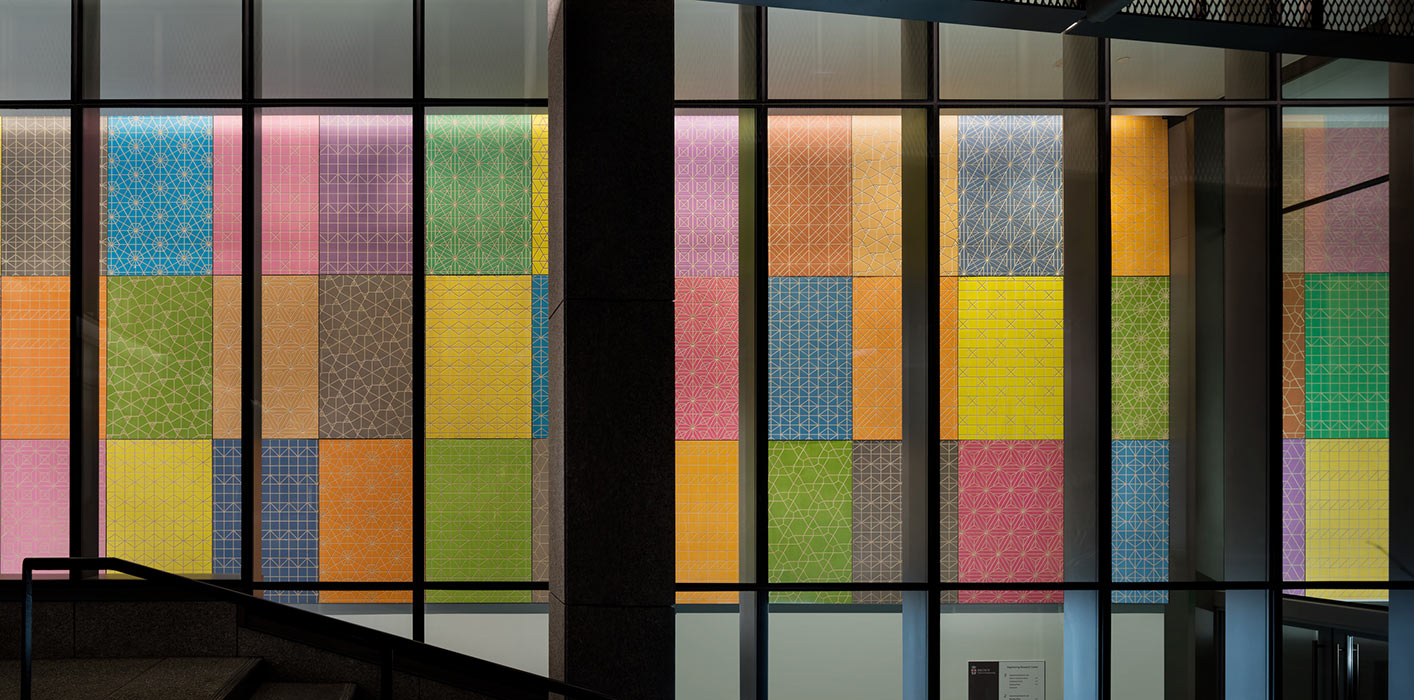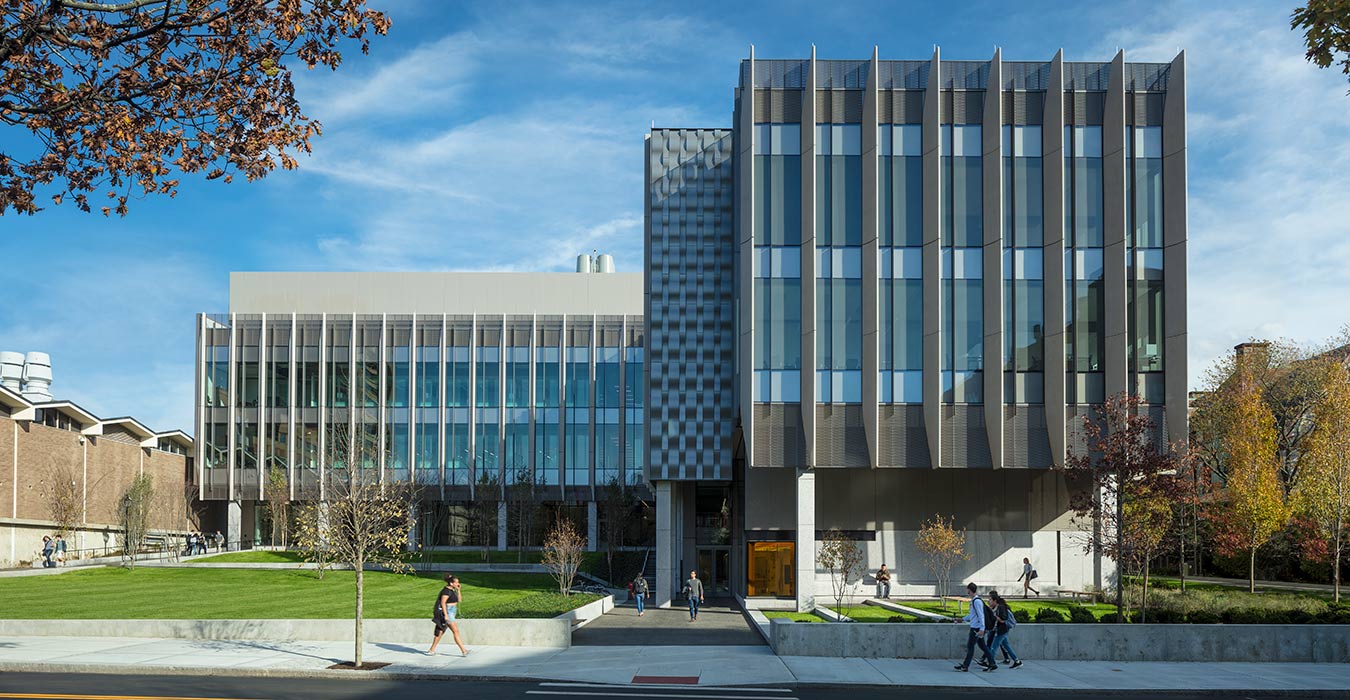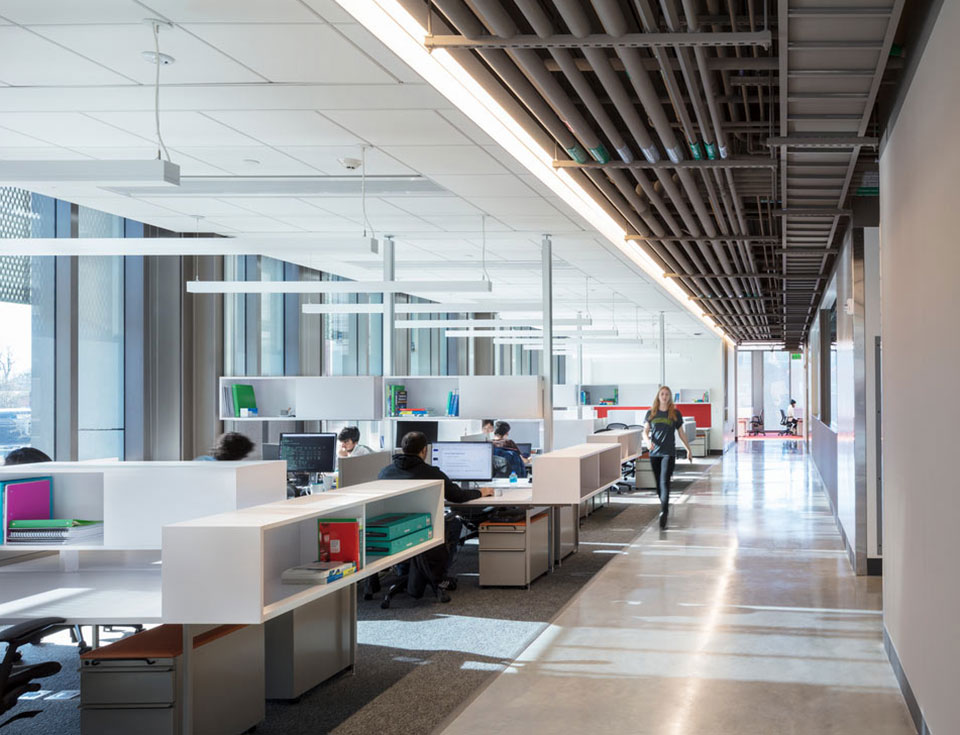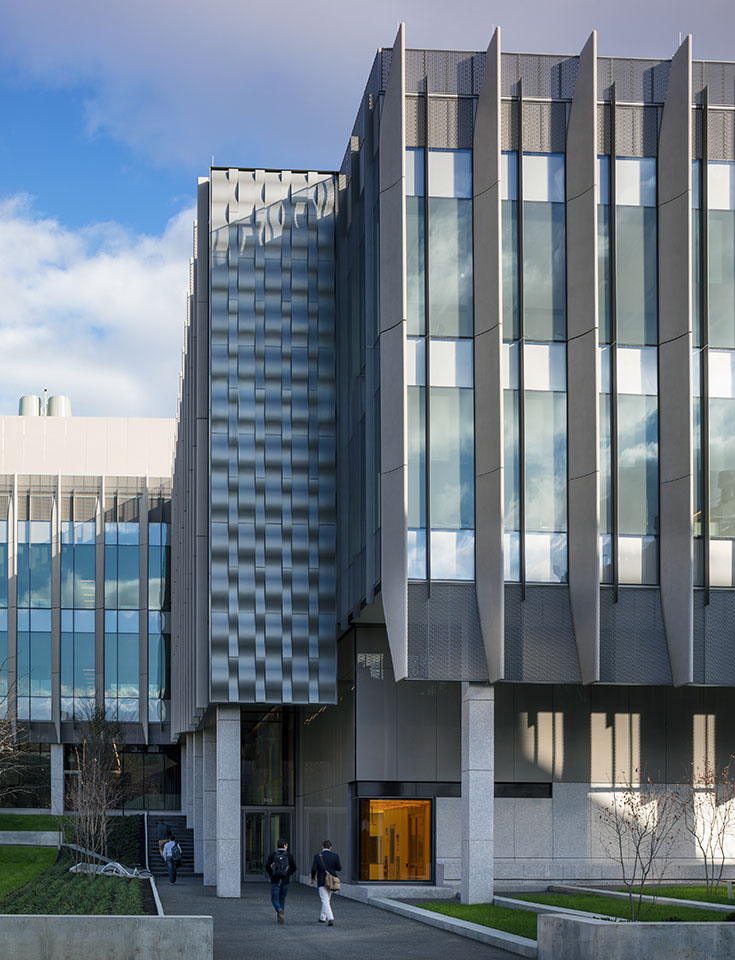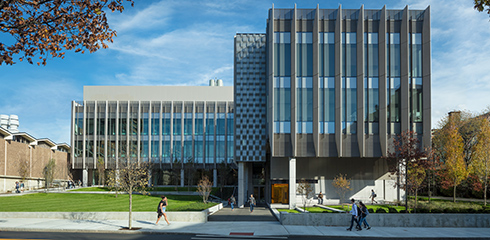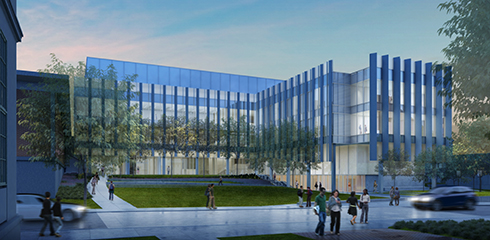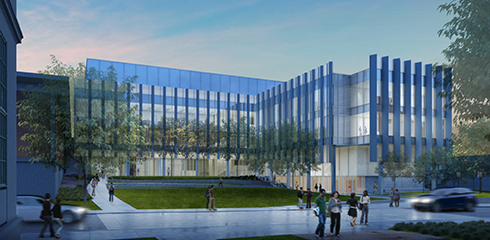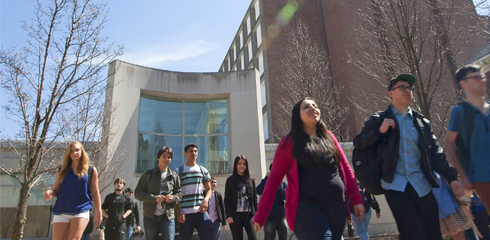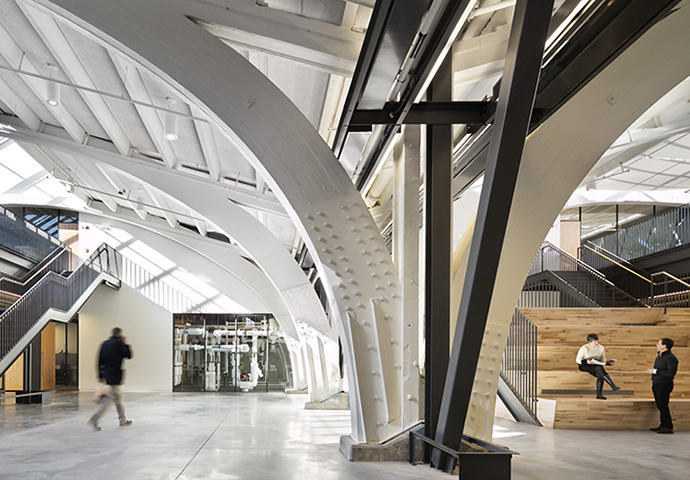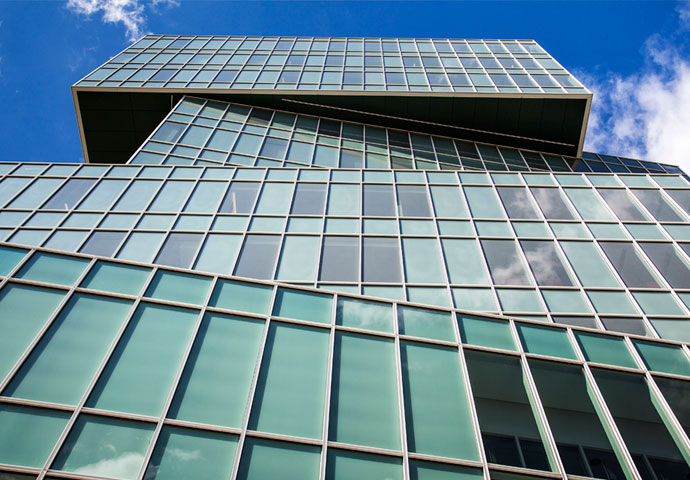How might an artful, people-centered laboratory inspire researchers to interact differently?
The L-shaped Engineering Research Building unites three separate laboratories and provides common space for many disciplines.©Warren Jagger
Founded in 1847, the engineering program at Brown University is the oldest in the Ivy League. But when Brown elevated its department to the status of School of Engineering in 2010, it was still without a unified home on campus. After several decades of growth, the engineering program had fragmented into three buildings with only tangential connections in both program and design. In 2014, Brown commissioned KieranTimberlake to design a new Engineering Research Center. Planned at the feasibility level as a standalone building with an umbilical connection to the existing engineering resources, the design instead matured into a campus planning effort that more broadly embodies the School and extends the campus core. The result is not an isolated research center but a transformative place of welcome for the entirety of the University.
Forming Connections
Collaborating in Brown's first multi-party integrated project delivery for a new building, we worked closely with the University and consultants to reconceive a program to invigorate the entire School of Engineering. Our collective efforts focused on discovering new ways for researchers to interact with each other and the larger campus community, which not only confirmed the infrastructure and resources for a state-of-the-art research center, but wholly changed the way research is seen on campus. The project site is deeply integrated into a previously disconnected cluster of engineering facilities. The new building transects these buildings and joins them alongside the new program to cohesively define a new Engineering quadrangle. Pedestrian paths encircle the quad and lend primacy to this new campus green, centering the renewed development as a shared community resource. Inside the building the central commons is a convivial open space that captures daily traffic flow and is also used for conferences and demonstrations that serve the larger university community.
"Collab" work spaces flank each laboratory and are lined with fritted glass to offer privacy without sacrificing natural light. ©Warren Jagger
Flexible and Light
A suite of multi-disciplinary laboratories is at the core of the building's program. Forward-looking and customizable, the building's engineering labs are accessible and loft-like, designed to adapt to shifting research types and encourage conversation and exchange among researchers and across academic disciplines. Flexible, open-plan “co-lab” workspaces connect visually and programmatically to each laboratory, enabling new workflows while maximizing daylight and views for all occupants. Exterior glass fiber-reinforced concrete fins are a unifying and rhythmic element that extend the masonry vocabulary of the surrounding campus, while keeping views into and from the building as open as possible and shielding the workspaces from solar heat and glare.
Glass-fiber concrete shading fins and metal screens on the building's facade reduce glare and manage solar heat gain. ©Warren Jagger
Art and Engineering
The architecture is enriched by artwork commissioned by Brown University's Public Art program, which selected artist Spencer Finch to create a series of installations throughout the new building. Inspired by the engineering experiments occurring at the school, Finch worked integrally with the architects and researchers to interpret tessellation patterns in ceramic tile, fritted glass, flooring, and wood wall panels. Collectively titled “The Garden in the Brain,” the interventions are alternately placed prominently and tucked away in discreet locations—a poetic approach to merge wonder and scientific discovery on Brown's campus.


